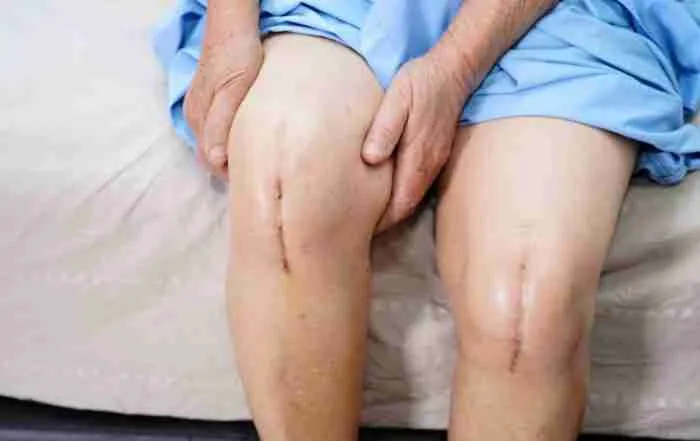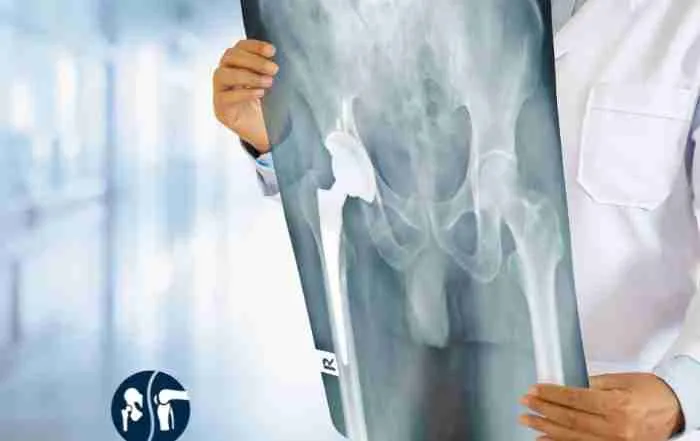
Anatomy of the Hip
Mechanisms of Injury
Patients can fracture their hips in many different ways. Overall, over 95% of hip fractures in older adults in the U.S. are due to falls. Certain fracture patterns are more likely to occur with certain mechanisms. For example, femoral neck fractures often occur in older adults after a direct fall onto the side of the hip, a twisting motion, or a sudden completion of a gradual fracture due to insufficiency.
In younger patients, femoral neck fractures are often due to high mechanism accidents, such as a motor vehicle collision. Like femoral neck fractures, intertrochanteric fractures in older adults are also often due to falls. In younger adults, intertrochanteric fractures are often due to motor vehicle collisions. In young people, there may be other associated injuries that surgeons should be aware of.

Location of the fracture
Intracapsular
These fractures occur in the head and neck of the femur within the joint capsule, the lubricating fluid surrounding the joint. Typically, patients will undergo hip arthroplasty or internal fixation of the fracture. Hip arthroplasty is a hip replacement. Internal fixation for this fracture pattern usually consists of screws.
If the fracture is displaced, unstable, or due to osteoporosis, the surgeon may recommend a hip replacement. Older patients who underwent hip arthroplasty after hip fractures reported better index scores, greater satisfaction, and less pain than their counterparts who underwent internal fixation. Additionally, only 11% of people treated with hip replacements in one study needed repeat surgery compared to 40% of those with internal fixation in one study.
Hip replacements are also beneficial for younger, fit patients who will need a treatment that supports a higher level of activity for a longer duration. However, there is also data that suggests that people who undergo hip replacements for hip fractures have a greater risk of hip displacement. This displacement could cause a fall, which is especially concerning for frail or elderly patients. Hip fractures and falls are a major risk factor for increased mortality in older patients.
Intertrochanteric
As stated above, an intertrochanteric fracture occurs below the neck, in the same line as the trochanters. Surgeons typically use intramedullary nails or screws at this site. An intramedullary nail is a long nail placed into the marrow canal of the bone to stabilize the fracture. Neither method is necessarily superior to the other.
Some studies suggest that nails have fewer revision rates, slightly less pain, and greater mobility than patients who had sliding hip screws placed. However, there is some data that nailing increases the risk for malalignment compared to other treatment options. Screws increase the stability of the fracture site and promote healing. Ultimately, the surgeon chooses one method over the other depending on the fracture and his or her preference.
Subtrochanteric
A subtrochanteric fracture is, as the name implies, a fracture below the trochanters. Like intertrochanteric fractures, surgeons typically use intramedullary nails and screws. In fact, some fractures require the use of both devices during repair. Some surgeons use plates, thin pieces of metal that hold the fracture in place, secured with screws. Again, choosing one method over the other depends on the comfort of the patient and the stability of the fracture.
Treatment
Hip Replacement
Generally, hip replacement is beneficial for people who have unstable, displaced fractures, or whose fractures were due to osteoporosis or insufficiency. Older patients who underwent hip arthroplasty after hip fractures reported better index scores, greater satisfaction, and less pain than their counterparts who underwent internal fixation.
Hip replacements are also beneficial for younger, fit patients who will need a treatment that supports a higher level of activity for a longer duration. However, there is also data that suggests that people who undergo hip replacements for hip fractures have a greater risk of hip displacement. This displacement could cause a fall, which is especially concerning for frail or elderly patients. Hip fractures and falls are a major risk factor for increased mortality in older patients.
Intramedullary Nails
For certain fracture locations, surgeons favor intramedullary nails. In these fracture sites, nails have fewer revision rates, slightly less pain, and greater mobility than patients who had sliding hip screws. However, some studies suggest that nailing increases the risk for malalignment compared to other treatment options.
Screws
Screws are often used in non-displaced femoral neck fractures. In young patients, screws may be used in an attempt to avoid hip replacement. The benefits of using screws are decreased wound infections and decreased blood loss when compared to hip arthroplasty. However, people who underwent internal fixation with screws had higher revision rates than those who underwent arthroplasty.
Non-operative
Some patients with hip fractures are managed non-operatively. This option is reserved for those who would be more harmed by surgery than benefitted. These include non-ambulatory patients, patients with severe dementia with minimal pain, unstable patients with multiple comorbidities, or patients nearing the end of a terminal illness.
Summary
The hip is an important joint that can be injured in both the young and the elderly. A hip fracture can occur in the upper part of the thigh bone or the acetabulum of the pelvic bone. There are many different surgical options, including screws, nails, and arthroplasty. Each option should be tailored to the location and extent of the injury. An orthopedic surgeon should always be consulted about the management of a complicated hip fracture. Ask Dr. Morton about your options in regards to hip fracture repair.
Related Pages
How Much Does A Hip Or Knee Replacement Cost?
Understanding Your Expected Bills Hip or knee replacement surgery is a transformative procedure that can significantly improve the quality of life for individuals with severe arthritis or joint damage. However, the financial aspect [...]
The Role of PRP in Treating Sports Injuries for Athletes
In the competitive world of sports, athletes constantly push their bodies to the limit, which, unfortunately, often leads to injuries. The quest for effective and swift recovery solutions is ongoing from tendonitis and [...]
CBD in Orthopedic Practice: Enhancing Recovery and Well-being Beyond Opiates
The integration of Cannabidiol (CBD) in orthopedic practice offers a promising alternative to traditional opiate-based pain management.
Speedy Recovery: Practical Tips for a Faster Recovery After Knee and Hip Replacement
Introduction Hip and Knee Arthroplasty, more commonly known as hip and knee replacement surgery, is a widely performed procedure that offers a new lease on life for individuals grappling with severe knee conditions, including [...]
Understanding the Different Types of Total Hip Bearings
Total hip arthroplasty, commonly known as hip replacement, is a surgical procedure that replaces the hip joint with an artificial one. The artificial joint, or implant, consists of several components, one of which is [...]
Tips on Returning to Pickleball after Hip or Knee Replacement
[toc] What is Pickleball? Pickleball is a fun and exciting sport enjoyed by people of all ages. Its simple rules and low-impact nature make it an excellent option for people who want to stay [...]







